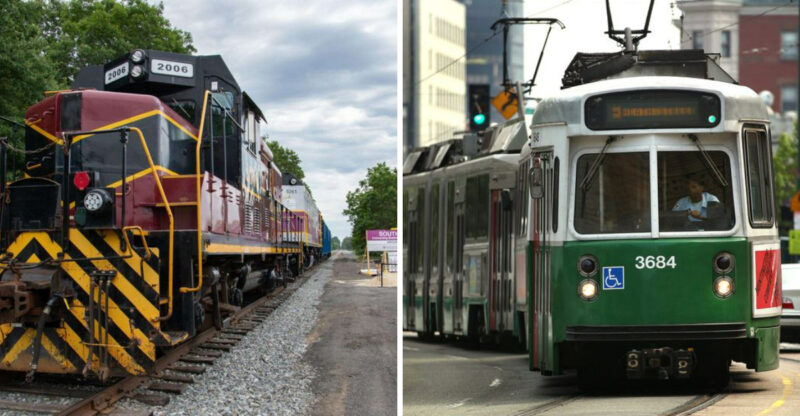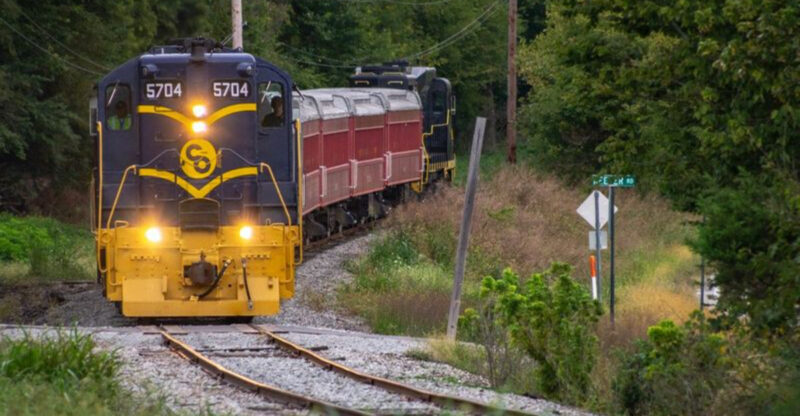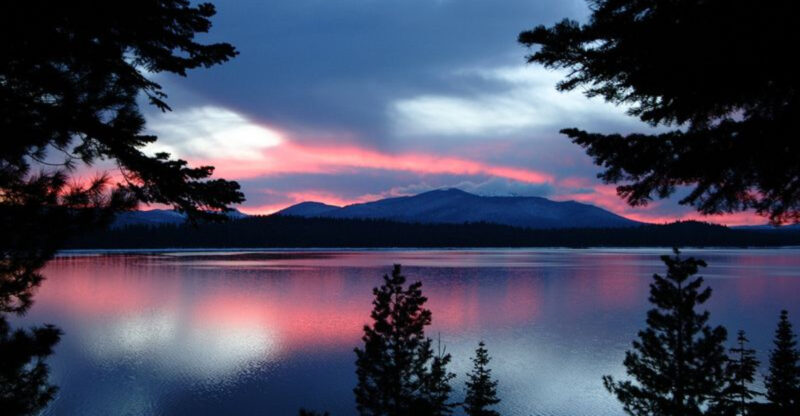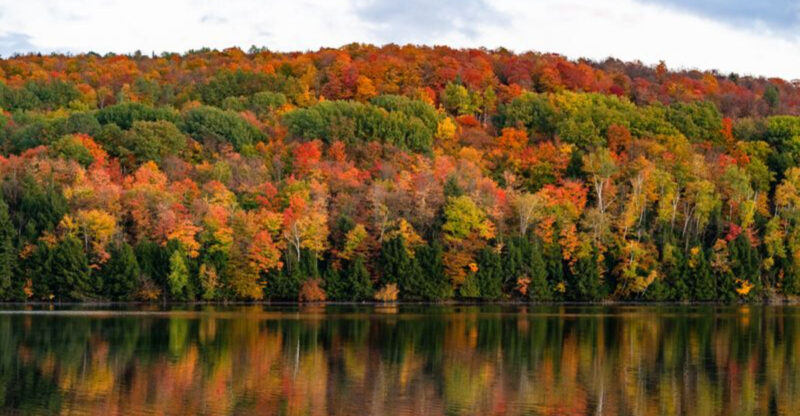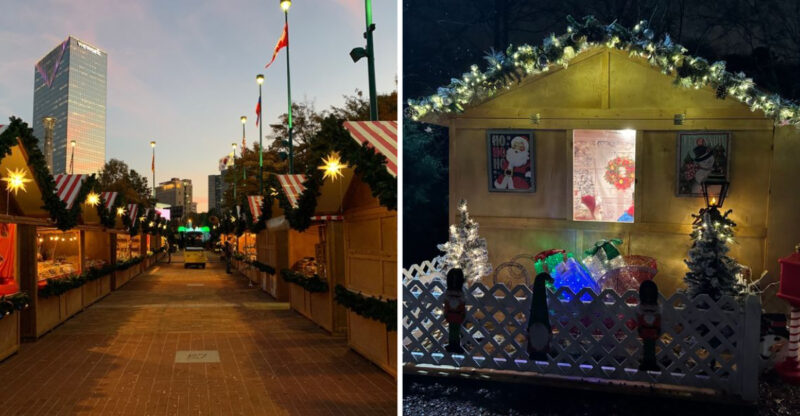The Scenic Covered Bridge In Indiana That Locals Call A Hidden Gem
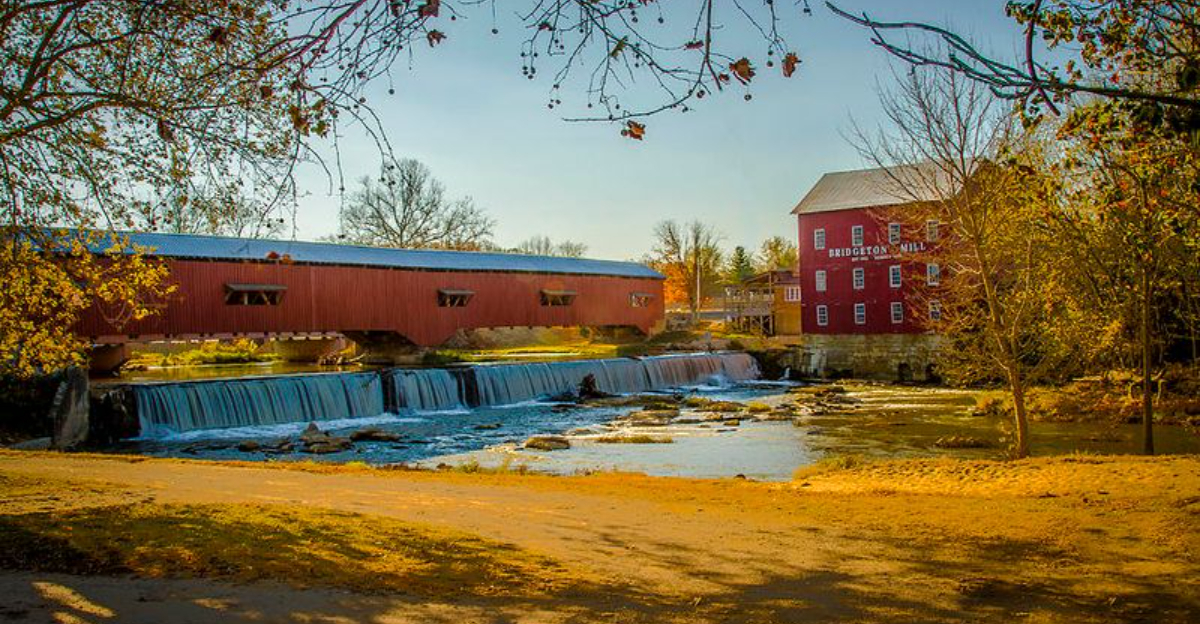
Soft sunlight filters through the trees, glinting off calm water as it flows beneath weathered wooden beams. The air carries the faint scent of pine and history, blending the quiet of the countryside with the whisper of time passing by.
In Parke County, Indiana, the Bridgeton Covered Bridge stands as a story in wood and paint – sturdy, graceful, and timeless. Its red walls frame more than a view; they frame moments of reflection, romance, and connection.
1. The Charm Of Indiana’s Covered Bridges
Indiana holds the title of having more historic covered bridges than almost any other state. Parke County alone boasts over thirty of these wooden treasures scattered across rolling farmland and quiet creeks.
Each bridge tells a story of engineering and community pride from the 1800s. Bridgeton’s version stands out for its picturesque setting and the way it blends history with natural surroundings, making it a favorite stop for road trippers and history buffs alike.
2. Bridgeton Covered Bridge Overview
Spanning 245 feet across Big Raccoon Creek, Bridgeton Covered Bridge catches attention with its bold red paint and classic Burr arch truss design. Built originally in 1868, this double-span structure remains one of the longest in the county.
Visitors can walk or drive through, experiencing the cool shade and echoing sounds inside. The bridge sits right beside a working gristmill and cascading waterfall, creating a postcard-perfect scene that feels like stepping back in time.
3. Historical Background And Reconstruction
Fire destroyed the original Bridgeton bridge in 2005, leaving the community heartbroken. Local residents rallied together, determined to rebuild their beloved landmark using traditional methods and materials.
By 2006, craftsmen had reconstructed the bridge following the original 1868 design specifications. This dedication to preserving history shows how much the structure means to the area, serving as both a functional crossing and a symbol of resilience for generations.
4. Architecture And Design Details
The Burr arch truss system combines wooden beams with graceful arches for extra strength and stability. This engineering approach, popular in the 1800s, allows the bridge to support heavy loads while maintaining an elegant appearance.
Walking through reveals hand-hewn timbers and traditional joinery techniques rarely seen in modern construction. Small gaps between the siding boards let sunlight filter through, creating beautiful patterns on the wooden floor below.
5. The Town Of Bridgeton’s Heritage
Bridgeton itself barely qualifies as a town, with fewer than a hundred residents calling it home. Yet this tiny settlement packs remarkable historical significance, dating back to the early 1800s when settlers first established mills along Mill Creek.
Several original buildings still line the quiet streets, including old general stores and homes built before the Civil War. The community’s commitment to preservation keeps authentic character alive without feeling like a theme park.
6. Bridgeton Mill And Waterfall Connection
Right beside the bridge stands a restored 1823 gristmill that still grinds cornmeal using water power. The mill now runs on electric power instead of water (it was converted in 1951).
This pairing of bridge and mill creates an authentic glimpse into 19th-century rural life. Visitors can purchase fresh-ground cornmeal from the mill shop, connecting them directly to traditional food-making practices that sustained communities for generations.
7. Scenic Views And Photography Spots
Photographers flock here for good reason – the bridge offers countless angles and compositions. From creek level, reflections dance on the water surface, doubling the visual impact on calm days.
The hillside behind provides elevated viewpoints showing the bridge, mill, and waterfall together in one frame. Early morning fog or late afternoon golden light adds drama, while the surrounding trees frame shots naturally in every season.
8. Seasonal Beauty Through The Year
Spring brings wildflowers and rushing water as snowmelt swells the creek beneath the bridge. Summer offers lush green canopy and dappled shade perfect for picnicking along the banks.
Fall transforms the area into a painter’s palette with maples and oaks ablaze in orange and gold. Even winter has appeal, with bare branches revealing the bridge’s lines more clearly and occasional snow creating a peaceful, hushed atmosphere.
9. Festivals And Community Events
Every October, Parke County hosts its famous Covered Bridge Festival, drawing hundreds of thousands of visitors over ten days. Bridgeton becomes a hub of activity with craft vendors, food stalls, and live music filling the tiny town.
Local artisans sell handmade quilts, woodwork, and preserves while visitors explore all the county’s bridges on scenic driving routes. The festival celebrates rural heritage while supporting the local economy and bridge maintenance efforts.
10. Nearby Attractions And Day Trip Ideas
Turkey Run State Park sits just a short drive away, offering hiking through sandstone canyons and along Sugar Creek. The park’s rugged trails contrast nicely with Bridgeton’s gentle countryside, giving outdoor enthusiasts varied terrain to explore.
Rockville, the county seat, features antique shops and local restaurants worth visiting. Combining several covered bridges into one driving loop creates a full day of exploration through some of Indiana’s prettiest rural landscapes.
11. Accessibility And Visitor Information
The bridge remains open to only to pedestrian (no vehicle traffic allowed). Parking areas on both sides allow visitors to explore on foot without blocking the roadway.
The site has no admission fee and welcomes visitors year-round during daylight hours. Restroom facilities may be limited, so plan accordingly. The mill operates seasonally with varying hours, so checking ahead ensures catching it open for tours and purchases.
12. Tips For Photographers And Travelers
Arrive early morning or late afternoon for the best natural lighting that makes the red bridge practically glow. Weekdays tend to be quieter than weekends, especially outside festival season.
Bring comfortable walking shoes for exploring creek banks and different vantage points. A polarizing filter helps manage reflections on the water. Respect private property boundaries while seeking angles, and remember that local residents live nearby and appreciate courtesy from visitors.
13. Preservation And Local Efforts
Maintaining wooden covered bridges requires ongoing attention to prevent rot, insect damage, and structural wear. Local historical societies and county officials work together on regular inspections and necessary repairs.
Community fundraisers and festival proceeds help fund preservation projects that keep these landmarks safe for future generations. Volunteers often assist with painting, cleaning, and landscaping, showing how much pride residents take in their heritage. Their efforts ensure authenticity while meeting modern safety standards.
14. Why Bridgeton Covered Bridge Remains A Local Treasure
Beyond its photogenic qualities, Bridgeton represents something deeper – a connection to simpler times and craftsmanship built to last. Locals value it as a gathering place and source of community identity.
For visitors, it offers a rare chance to experience authentic rural America without commercialization overwhelming the experience. The combination of natural beauty, historical significance, and welcoming atmosphere creates memories that outlast any photograph, making it truly deserving of hidden gem status.

